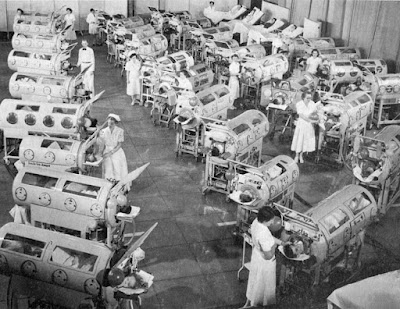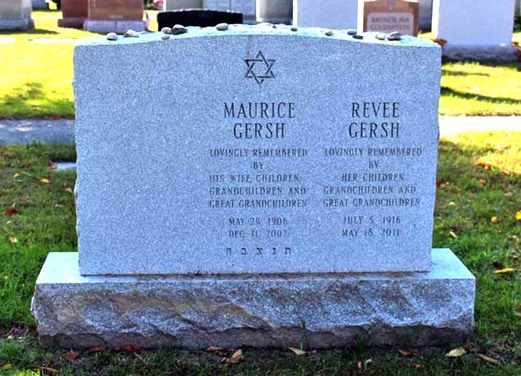Another place, another time, another epidemic
As the world struggles to recover from the Covid pandemic, it has been interesting to think back on earlier epidemics that have affected my life. As a small child, I received the smallpox vaccination and the polio sugar lump (Sabin) version, later a booster injection. These were two horrible diseases you seldom hear about anymore but that caused widespread death or disability and disfigurement. Polio was known at the time as Infantile Paralysis, but it didn't just affect children, although photos of them being confined to iron lungs were the stuff of nightmares.
 |
| Children in Iron Lungs, c. 1950 |
When I was born in the Nkana Mine Hospital in Northern Rhodesia [Zambia] just after World War II, a polio epidemic was raging in the vicinity. You can see Nkana in the centre of this map, from the Infantile Paralysis Foundation, that shows where it was concentrated, and the legend shows the number of cases per 100,000 population as being at the highest end of the scale.
My mother had an emergency caesar operation and it was touch and go for both of us at the time. She later recalled that due to polio cases among the nursing staff, people stayed away and her only visitor was the wife of the owner of the store that my father managed at the time. She had just escaped the horrors of the Holocaust in Europe and some epidemic wasn't going to bother her unduly. (Copied below from my website is a piece I wrote a few years ago that includes this amazing lady.)
Haven from the Holocaust
There’s this small book in my library collection on African history that is probably only known to a few people. Written by Frank Shapiro, an Israeli historian, it is entitled “Haven in Africa”. This is from the opening Note to the Reader -
"Thousands of Jews fleeing Hitler could have found a safe haven in central Africa, had they but been aware of it. Sadly, efforts on their behalf by well-meaning outsiders were thwarted and did not bring results. The reader can judge the extent of this historical failure and decide for himself whether a conspiracy was involved."
At the time I was born just after World War 2, a polio epidemic was raging through our community and people tried to avoid places where they might have contact with sufferers, and that included unnecessary visits to the local hospital. This meant that my mother, recovering from an emergency caesarean, had few visitors apart from my father. But one woman did come to see her regularly, unafraid of infection. She was Jewish, the wife of a prominent local businessman for whom my father managed a department store. Despite their religious differences (my mother was Orthodox Christian) they had the Russian language in common and this woman would have understood how difficult it was to have been, firstly, a refugee from your own country and, secondly, a foreigner in an environment that was not always welcoming, not to mention having no-one from your own family around you to help with your new baby.
Among my childhood mementos is a white felt rabbit that was her gift to me as a new-born. Whether she made it herself, I don’t know, but I still treasure it today. Its significance for me has grown over the years as I have come to appreciate how much my mother must have valued this woman’s friendship at a time when she would have been at her most vulnerable. Through the wonders of the Internet, I have been able to find out a little about the woman who gave me the rabbit. She was Reeve Gersh and below is an image of her gravestone in Massachusetts where she and her husband lived out their later years. (This link has more about the Gersh family of Kitwe.)
Our world is again embroiled in refugee turmoil and the turning away of desperate people. For anyone baffled at how so many countries turned their backs in the 1930s on the Jews destined to suffer under Hitler, it is worth reading Frank Shapiro’s revealing but also sad and frustrating tale of missed opportunity and failure. Northern Rhodesia was the one country to which countless European Jews could have escaped had they only known about it and had there not been deliberate suppression of that knowledge in the wider community.
Another book that has chapters on the Gersh family is this one about their uncles, the famous African traders, the Susman Brothers, who were also connected to Marks & Spencer.






Comments
Post a Comment